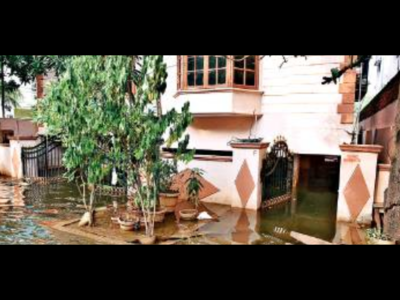The Times of India 21.12.2010
Time the city had an Urban Arts Commission
answers to the issues of local governance, most of us miss out on the
one solution that can address these problems without forcing the
government to go in for more fundamental changes: set up an Gurgaon Urban Arts Commission.20COLUMN.TIM
something that local government bodies are loathe to call it Gurgaon,
today, has a skyline that makes people, both its residents and visitors,
wonder what next?
It has a skyline that appears to be taking
shape simply because of what the bottomlines of its plethora of
developers, builders and colonisers will look like at the end of every
financial year. From a largely rural character, then to one of a
suburban township, Gurgaon is today metamorphosing into an urban
behemoth.
It took the central government over 25 years to
decide that the multiplicity of decision-making urban authorities in
Delhi needed a central body to preserve, develop and maintain the citys
aesthetic quality. The Delhi Urban Art Commission was set up by an Act of Parliament in 1973 to advise the Government of India
in the matter of preserving, developing and maintaining the aesthetic
quality of urban and environmental design within Delhi and to provide
advice and guidance to any local body in respect of any project dealing
with building operations or engineering operations or any development
proposal which affects or is likely to affect the skyline or the
aesthetic quality of the surroundings or any public amenity provided
therein.
But, this action was taken at a time when New Delhi
was yet to develop the character it has now. The question that then
comes to mind is why the state government is taking more than 37 years
to constitute an urban arts commission to address the mess that Gurgaon
is fast turning into. If Gurgaon today represents a vivid contrast
between prosperity and poverty, between technology and village life, and
between skyscrapers and slums, it has little to do with governance.
Governance for the average citizen comes in when the raucous
advertisements that dot its crowded expressways or highways give way to
signages that take one to his/her destination, when there is a clear
linkage between parks and sidewalks, between cycle tracks and pedestrian
movements. It is also when you have authorities that are not trying to
bridge the gap between a slum and a colony, simply by making the slum an
upgraded colony and the latter a slum in the making.
But, then this is what is happening in our Goodgaon.
Nobody disputes the fact that what Gurgaon is today is because the
millennium was changing, technology was coming and we, as a tech-savvy
nation, were coming alive. But, little did we realise that our citys
transformation from a sleepy suburb to a happening city was taking place
at the hands of some individuals both within and outside the
government.
As a result, we have developers who have all the
approvals, loudly proclaiming a colonys inherent beauty, refusing to
acknowledge the urban mess that is taking birth around them. Today, we
have no controls on both the skyscrapers and slums that are coming up in
the city. The only victim appears to be a city that is living in what
appears to be growing urban decay. The question that arises here is that
have we crossed the threshold: probably not, if action is taken sooner
than later.


